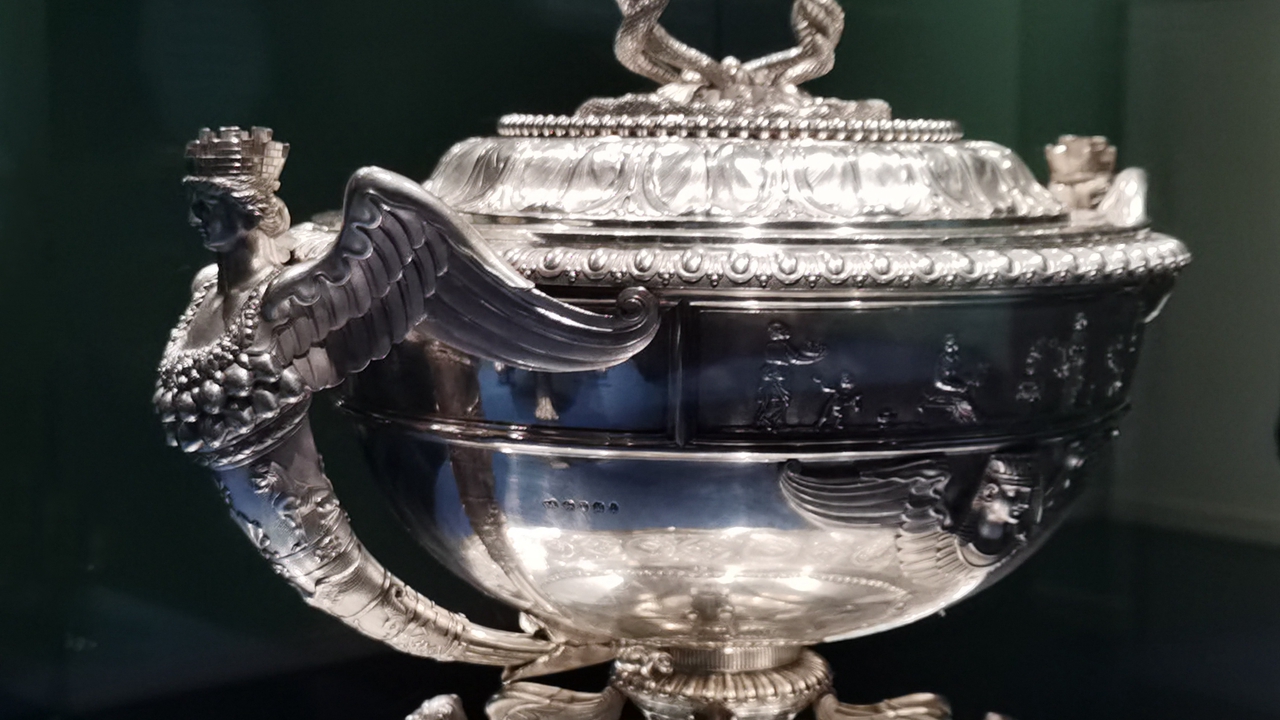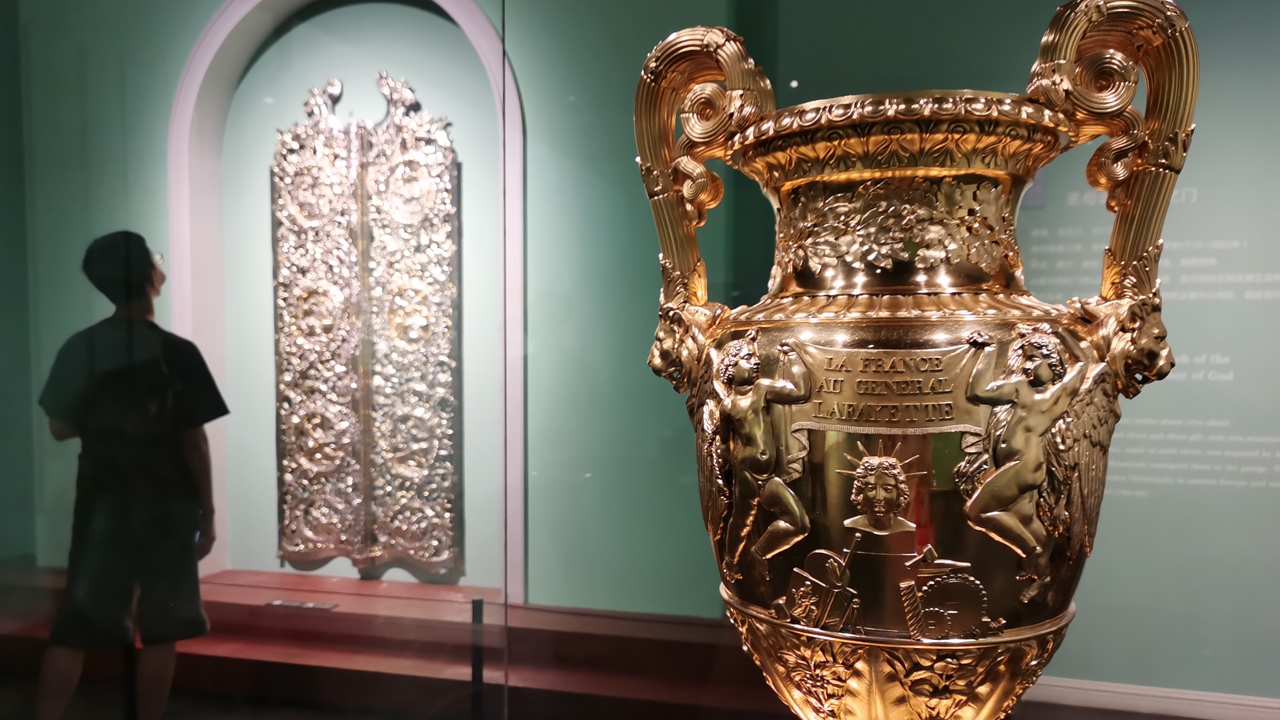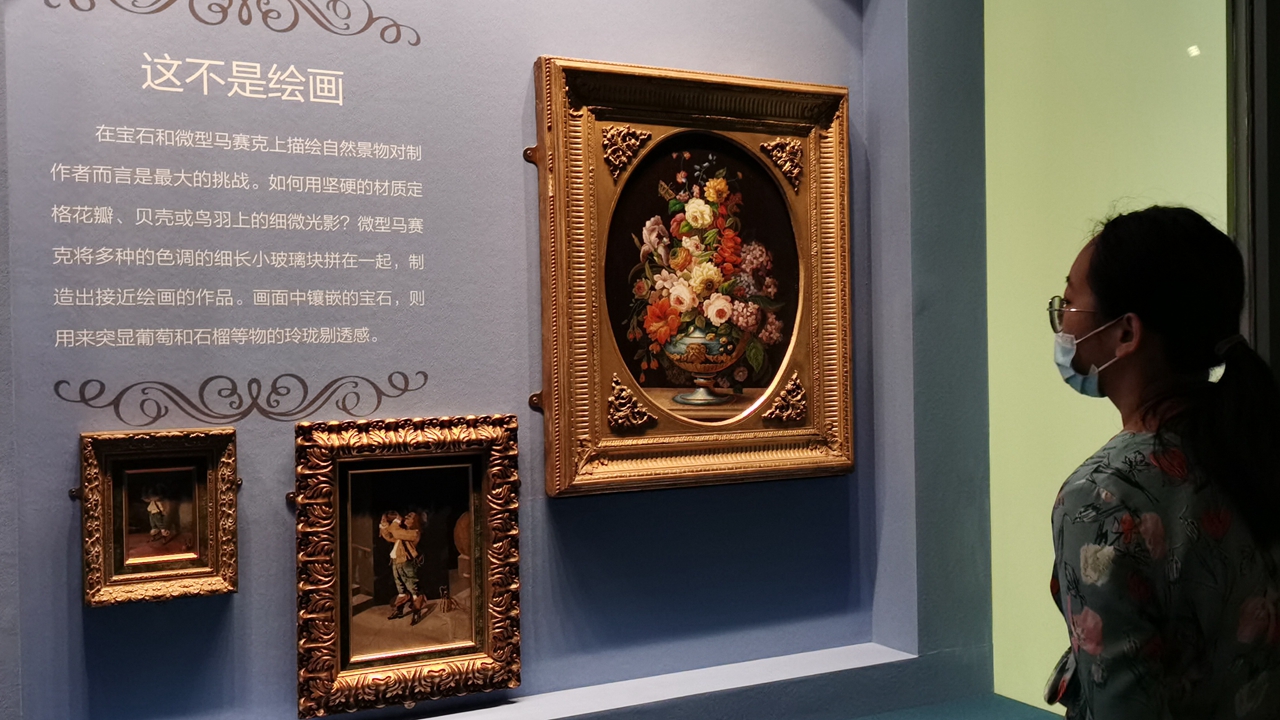Glittering treasures from the V&A hit Nanshan Museum
If you are lucky enough to book a visit to Nanshan Museum, which is recently booked up every day for its free Egyptian golden mummy exhibition, don’t forget to check out another must-see free exhibition there — “Masterpieces in Miniature: Treasures From the Rosalinde and Arthur Gilbert Collection.”
On loan from the Victoria and Albert Museum (V&A) in London, the 90 exhibits, together with six pieces from Nanshan Museum’s collection, guide visitors on a trip through gold, silver, portrait miniatures, snuffboxes, mosaic paintings and dresses.

A silver soup tureen from London, 1806-1807. Photos by Cao Zhen
Arthur (1913-2001) and Rosalinde (1913-1995) Gilbert were successful entrepreneurs, supplying high-end fashion retailers through their wholesale fashion label — Rosalinde Gilhert Ltd. — in London in the 1930s. After they moved to the United States in the 1940s, they made another fortune from real estate. The couple’s interest in finding unusual pieces to furnish their Beverly Hills villa soon developed into a passion for collecting.
“Their passion for craftsmanship and beauty has resulted in a collection that is unparalleled,” said Tristram Hunt, director of the V&A. “The Rosalinde and Arthur Gilbert Collection celebrates some of the most beautiful objects ever made, many in precious materials and often on a small scale, hence the title of the exhibition presents extraordinary craftsmanship in miniature,” he explained.
The couple “managed to acquire some unique works of art that had belonged to czar, kings, princes and some of the most prestigious historical figures in Western civilization,” said Alice Minter, senior curator of the Rosalinde and Arthur Gilbert Collection in the V&A.
According to Minter, the entire collection comprises about 1,000 objects in four categories: golden and silver works of art, snuffboxes, portrait miniatures, and glass and stone mosaics. The Shenzhen exhibition presents highlights from each of the four categories and visitors will learn the function of these objects and the techniques behind them through onsite videos.
Shining silver and gold items engulf visitors as they are drawn to many extravagant objects around them, such as an 18th-century English silver epergne, a 17th-century German silver-gilt cup in the form of a ship, a large 19th-century English silver soup tureen, a pair of Ukrainian silver church gates and some Renaissance marvels. These reflect the users’ wealth, power and taste.

“The Lafayette Vase” from France, 1830-1835, is seen in the foreground. In the background, a visitor observes “Gates From the Church of the Nativity of the Mother of God” from Ukraine, about 1784.
According to the exhibition profile, the couple in the beginning was attracted by the appearance of the silver objects to furnish their home but rapidly acquired a connoisseur’s expertise, developing a keen eye for the techniques and gaining knowledge of the most important makers. The majority of their silver collection is 18th- and 19th-century British silverwares and they added Indian, American and other European examples to form a comprehensive collection of gold and silver artworks. The collection demonstrates how silver and goldsmiths have responded to the evolving fashions, tastes and habits of their patrons.
Then visitors will gain immense enjoyment from inspecting the minutest details in arrays of snuffboxes and little enamel portraits. The star of the show is a snuffbox made of translucent green stone called chrysoprase, embellished with gold and color diamonds. “This marvelous object was probably one of the most expensive snuffboxes made at the time in the 18th century for the German king Frederick the Great,” said Minter.
The section of pietre dure (hardstones) and glass mosaic paintings reveals “the obsession that the craftsmen had to create eternal pictures that can rival the fading medium of paintings. Arthur Gilbert himself was so intrigued by this technique that he invented the word ‘micromosaic’ to describe this glass technique and has one of the largest collections in the world,” said Minter.

A visitor observes three micromosaic paintings at the exhibition.
These paintings made mainly in Italy are decorative designs formed by fitting hardstones or small glass mosaics together so tightly that the seams are barely visible to the eye.
It is the first time for highlights of the Gilbert collection to undertake a worldwide tour. Displaying the European decorative art from the 16th to 19th centuries, the exhibition received sensational response when it was held in Zhengzhou and Changsha earlier. It also won a place on the Top 10 Chinese Museum Exhibitions list in 2021.
Due to the recent COVID flare, Nanshan Museum is temporarily closed through next Wednesday. Since the museum is always booked up, it is suggested to book at 8:30 p.m. every night when the museum releases its new entry quota. You can occasionally check the booking page since someone may cancel their booking.
Dates: Until Oct. 30
Tickets: Free
Booking: WeChat account “nanshanmuseum”
Venue: Nanshan Museum, Nanshan District (南山区南山博物馆)
Metro: Line 1 to Taoyuan Station (桃园站), Exit B